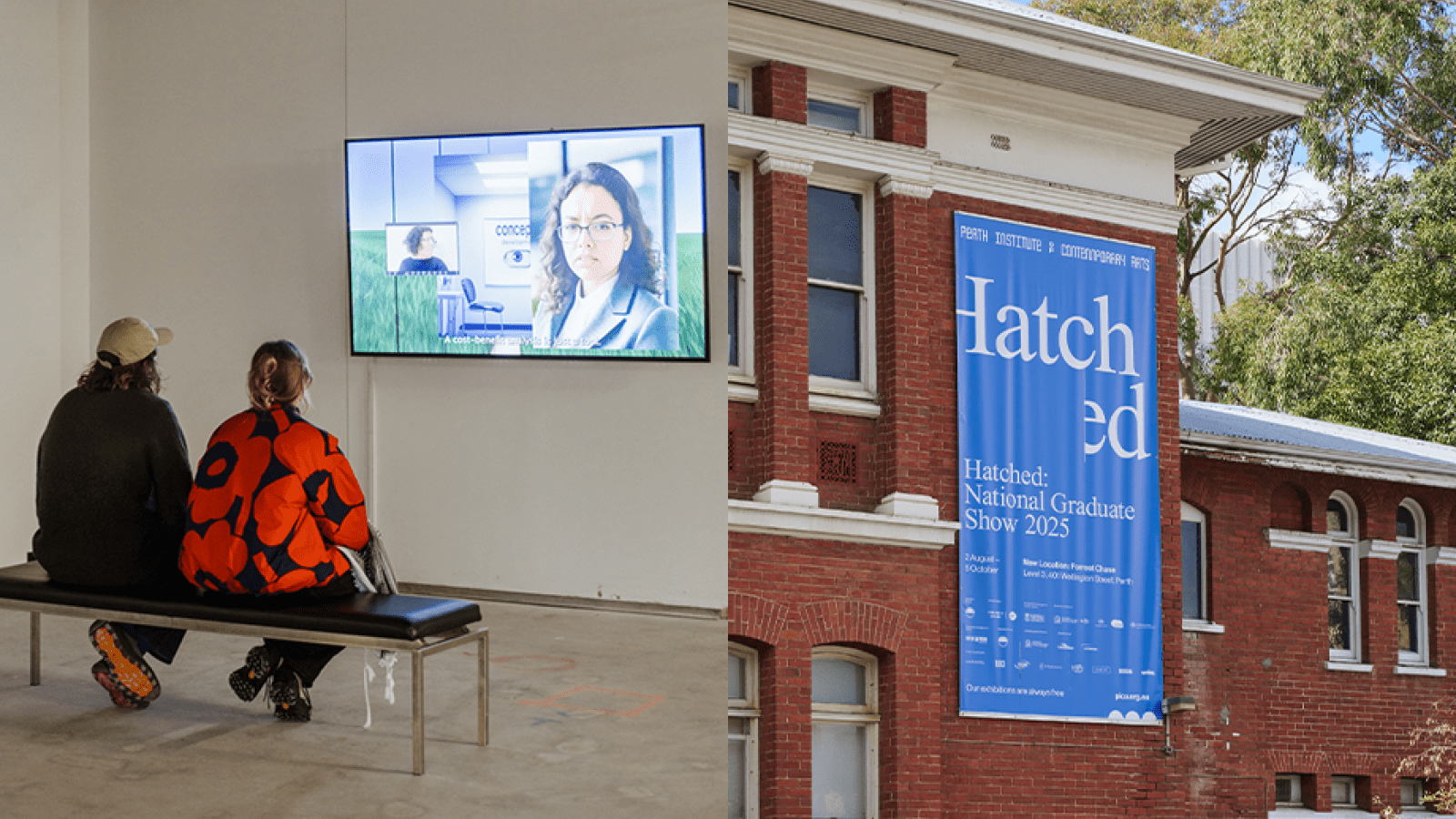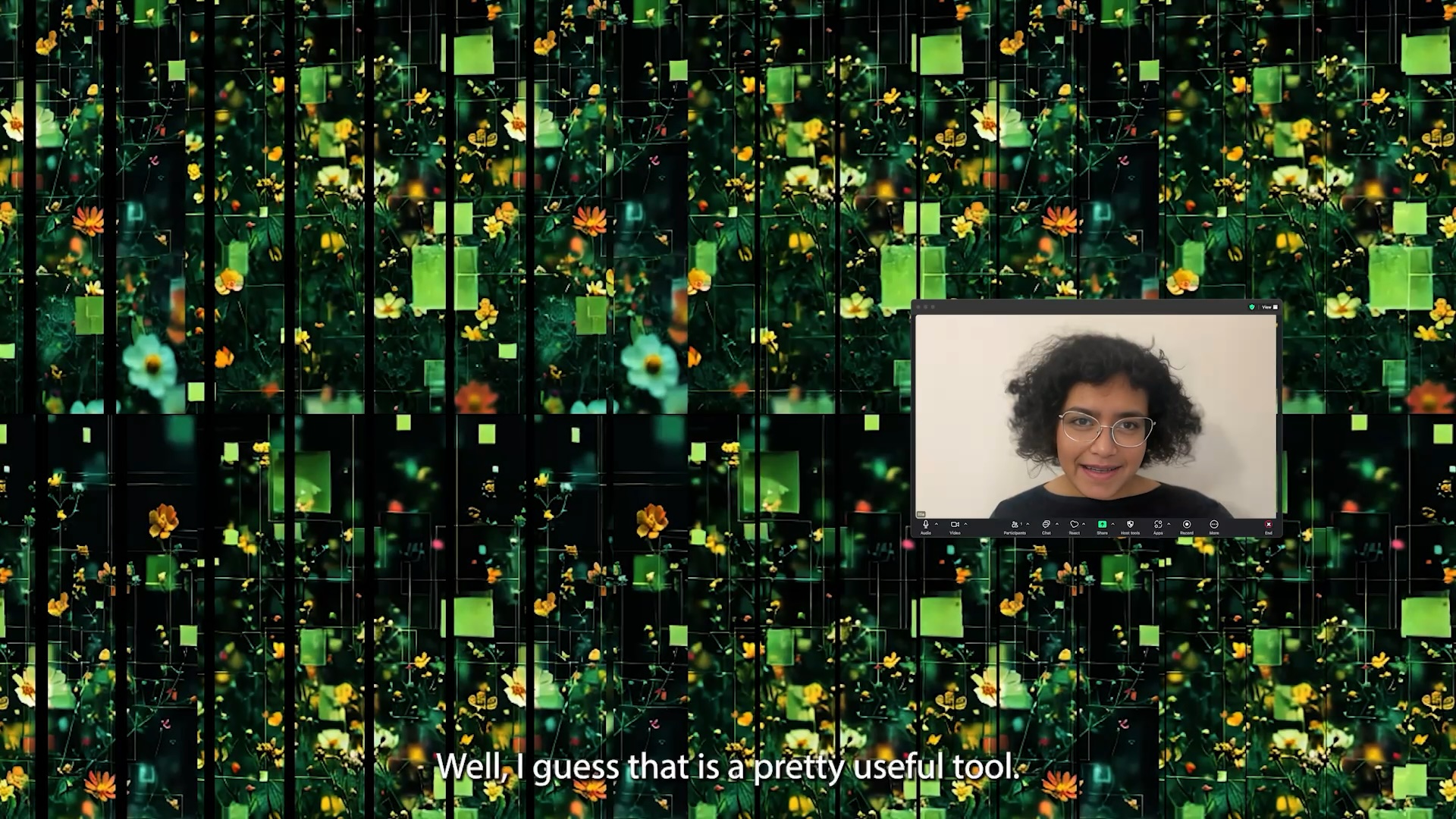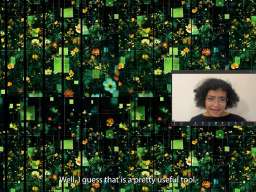Litia Roko: Hatched 2025

Image on left: Litia Roko, 500mL/point (2024), single-channel video. Installation view. Image on right: Hatched: National Graduate Show 2025, Perth Institute of Contemporary Arts.
Image on Left: Olivia Pizzale-Bryce, Image on Right: Rebecca Mansell.
Written by Erika McGown.
Every year, PICA’s Hatched: National Graduate Show offers a snapshot of where Australian contemporary art is heading. In its 34th year, one of the artists shaping that future in a sharp new direction is ANU alumna Litia Roko.
Her video work 500mL/point doesn’t present AI as a shiny creative tool or futuristic gimmick. Instead, it probes what sits behind the screen: Silicon Valley’s profit motives, environmental costs, and the growing use of generative images in political propaganda. “Tools are never neutral,” Roko says. “Approaching AI as just another medium or tool risks ignoring things that I think can’t be ignored.”
That kind of clear-eyed critique is what Hatched is known for. Since its inception in 1992, the Perth Institute of Contemporary Arts exhibition has launched the careers of many of Australia’s most recognised artists. For Roko, being part of that lineage was not just “an honour and a thrill,” but a chance to test how her work resonates alongside peers from across the country.
Outsourcing the Artist
In 500mL/point, Roko deliberately hands over her own performance to AI. Avatars that look like her deliver parts of the work, stitched together with dialogue appropriated from ads urging her to “optimise” her life with machine learning and slick keynote animations. The result is a “playful gesture toward one approach to images, technology, and art that is better placed to engage with these questions in opposition to the big tech benevolency narrative.” All in all, it’s unsettling.
She is using AI to show the consequences of handing over culture to machines. “It’s a cost–benefit analysis of outsourcing your art practice to artificial intelligence,” she says. The title itself refers to the enormous amounts of water used to run AI systems, pointing to the hidden environmental cost.
By letting AI perform in her place, Roko makes the audience sit with an uncomfortable question: if even the artist can be replaced, what’s left?

Shaped by the ANU, College of Arts and Social Science
That critical lens traces back to her time at the Australian National University (ANU). Before undertaking Honours in the School of Art & Design, Roko completed a Bachelor of Arts, taking courses in Sociology, History, and English. “My practice is very research-driven,” she says. “So having exposure to so many incredible researchers working across CASS really gave me the foundation to be able to engage critically with the questions I’m interested in.”
A pivotal moment came in 2023, when she joined a class led by Associate Professor Katrina Sluis. The project ended with a “funeral for photography,” a playful but pointed way to confront the transformations of image culture in the 21st century. “That course completely changed how I approach my practice,” Roko recalls.
What Comes Next
Roko is getting ready now to present Q1 Close, a solo exhibition at Platform by Canberra Contemporary opening on 4 December. Like her Hatched work, it continues to push at the edges of how we think about images in an AI-saturated world.
